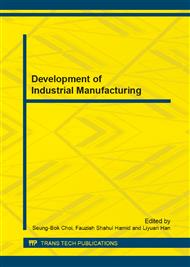p.53
p.58
p.62
p.66
p.73
p.77
p.81
p.85
p.89
Research on the Grinding Crack Causes and the Preventive Measures of the Solid Carbide End Milling Cutter
Abstract:
Based on the carbide material characteristics of two low and three high and its process characteristics, analysis the carbide milling cutter is easy to form crack defects in the grinding process. Through a briefly introduce the milling mill grinding process, the cemented carbide milling cutter grinding cracks are produced by a variety of reasons are detailed researched; Based on the causes of crack of the carbide milling cutter, the feasible preventive measures are put forward. And these research results can significantly reduced the crack phenomenon in the process of milling cutter grinding in corresponding enterprises, and which is of great significance for reducing the production cost for enterprises.
Info:
Periodical:
Pages:
73-76
Citation:
Online since:
February 2014
Authors:
Keywords:
Price:
Сopyright:
© 2014 Trans Tech Publications Ltd. All Rights Reserved
Share:
Citation:


